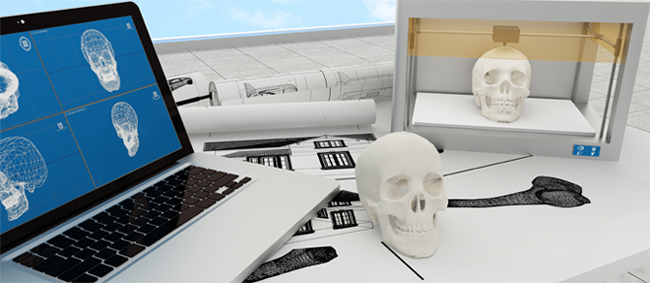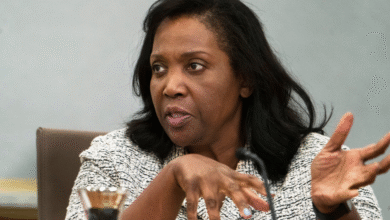3D Imaging Technology: Tackling Retail Return Fraud Effectively

3D imaging technology is set to revolutionize the way retailers handle return fraud, which has become a severe dilemma in the retail sector. Amazon is backing Cambridge Terahertz, a startup that has developed innovative imaging solutions aimed at tackling this pressing issue. With a recent $12 million investment from Amazon’s Industrial Innovation Fund, Cambridge Terahertz is positioned to enhance package verification processes, ensuring returned items are genuine and not empty boxes meant for deceitful practices. The implementation of this state-of-the-art technology comes at a crucial time, as return fraud resulted in staggering losses of approximately $103 billion last year, highlighting the urgent need for effective strategies in the industry. By embracing 3D imaging technology, retailers will not only protect their revenues but also improve operational efficiency in logistics management.
The emergence of advanced imaging systems such as 3D visualization technology offers an innovative approach to solving significant challenges faced by retailers today. As fraudulent returns undermine profitability, new solutions that enable accurate verification of package contents are more critical than ever. Cambridge Terahertz, leveraging substantial support from Amazon’s investments, is at the forefront of this technological evolution, making waves in the retail sector and beyond. This cutting-edge technology enables a deeper analysis of returned items, effectively assisting retailers in distinguishing legitimate returns from fraudulent attempts. As the demand for robust fraud prevention methods increases, such solutions promise to reshape how businesses manage their return processes and safeguard their assets.
Understanding Return Fraud in the Retail Sector
Return fraud has emerged as a significant challenge for retailers, causing substantial financial losses each year. This practice often involves customers returning items that are not the original products they purchased, or worse, returning empty boxes after keeping the actual merchandise. In fact, recent estimates indicate that such fraudulent activities cost retailers around $103 billion last year alone. This issue not only impacts the bottom line of businesses but also complicates inventory management, especially for e-commerce giants like Amazon that process hundreds of thousands of returns daily.
With the growing trend of online shopping, return fraud is becoming increasingly sophisticated. Retailers face hurdles in differentiating between genuine returns and those designed to exploit the system. The introduction of advanced technologies and solutions is essential for mitigating these issues. Companies need to adopt innovative strategies that provide accurate verification of returned items and help streamline the return process.
3D Imaging Technology: A Game Changer Against Fraud
The advent of 3D imaging technology is revolutionizing how retailers approach the challenge of return fraud. Cambridge Terahertz has pioneered a compact imaging device that allows retailers to look inside unopened packages, unveiling their true contents without the need for opening them. This groundbreaking technology helps ensure that the items being returned are what customers initially purchased, thus reducing fraudulent claims. Not only does this mitigate financial loss, but it also enhances customer trust in the e-commerce return process.
Moreover, the applications of 3D imaging extend beyond the retail sector, showcasing its versatility in various industries including aerospace and manufacturing. With a significant investment from Amazon, this technology can be rapidly developed and deployed to improve package verification processes. By integrating 3D imaging systems into their logistics operations, retailers can bolster their defenses against return fraud and enhance their operational efficiencies.
The Role of Amazon in Innovating Retail Solutions
Amazon’s investment in startups like Cambridge Terahertz signifies a commitment to fostering innovation within the retail sector. Since launching the Industrial Innovation Fund in 2022, Amazon has vested in numerous companies focused on technological advancements that can optimize operations. This includes initiatives aimed at both mid-mile and last-mile delivery efficiencies. By supporting emerging technologies, Amazon positions itself at the forefront of combating issues such as return fraud.
The collaboration between Amazon and Cambridge Terahertz highlights the critical need for sophisticated solutions in package verification. As e-commerce continues to grow, such investments are crucial for protecting assets and improving customer satisfaction metrics. With the goal of enhancing inventory management, Amazon is setting a benchmark for how technology can reshape the logistics landscape, emphasizing that technological innovation is key to future-proofing retail operations against fraud.
Financial Impacts of Return Fraud on Retailers
The financial ramifications of return fraud are significant for retailers across the board. Last year, incidents of fraudulent returns cost the retail sector approximately $103 billion, an alarming statistic that underscores the urgency for more robust return verification mechanisms. Retailers not only face losses from products that are wrongfully kept by consumers but also incur additional costs in restocking and handling returns. This scenario often leads to higher operational costs that can impact overall profitability.
In light of these challenges, retailers are increasingly recognizing the need for advanced solutions to address return fraud. The integration of technologies like 3D imaging could revolutionize return processing and verification, potentially saving retailers millions. By decreasing the incidence of return fraud, businesses can improve their profit margins and create a more sustainable model for returns, ultimately enhancing customer experience while minimizing losses.
Innovative Solutions for Package Verification
As fraudulent returns become a prevalent issue in e-commerce, innovative solutions for package verification are crucial for retailers. Technologies that allow for in-depth examination of package contents without requiring them to be opened could change the dynamics of returns significantly. Cambridge Terahertz’s 3D imaging technology offers retailers a means of verifying the integrity of returned items, which could greatly reduce losses stemming from fraudulent activities.
Implementing such technology not only addresses return fraud but also streamlines inventory management. Retailers could benefit from faster processing times and reduced handling costs associated with returns. Moreover, improved package verification solutions can lead to better inventory accuracy, which is essential for maintaining customer satisfaction and operational efficiency in the competitive retail landscape.
The Future of Retail Returns with Technology
As technology continues to evolve, the future of retail returns looks promising. Innovations such as 3D imaging not only combat return fraud but also enhance the overall efficiency of the return process. This future-forward approach may ultimately change how retailers engage with returns, shifting the focus from problem resolution to prevention. Investing in cutting-edge technology will be key to navigating the complexities of retail operations.
Additionally, as more companies invest in sophisticated solutions, we can expect a shift towards more automated and reliable systems for returns. This evolution will not only deter fraudulent activities but also improve the customer experience during the return process. Retailers that adopt these technologies early on will likely gain a competitive advantage in the industry, setting new standards for customer service in the realm of e-commerce.
Strategic Investments in Tech for Retailers
The retail sector is increasingly recognizing the necessity for strategic investments in technology to combat pressing issues like return fraud. As exemplified by Amazon’s $1 billion Industrial Innovation Fund, there is a clear trend towards allocating resources for innovative solutions that can save money and improve operational efficiency. By partnering with startups like Cambridge Terahertz, large retailers can leverage breakthrough technologies and stay ahead of the curve.
These strategic investments also create opportunities for smaller technology companies to innovate and develop solutions tailored for the retail sector. This cooperative approach is beneficial for both parties, as large retailers gain access to cutting-edge technology while startups find vital funding and support to refine their products. Ultimately, such collaborative efforts are crucial for scaling technology applications that can effectively tackle return fraud and enhance the overall efficiency of retail operations.
Government Collaboration and Retail Technology
The collaboration between startups like Cambridge Terahertz and government entities signifies the importance of technology in addressing national issues, such as illegal shipments. As Cambridge Terahertz engages in discussions with U.S. Customs and Border Protection, the implications for retail technology’s role in enhancing national security cannot be overlooked. The intersection of business innovation and government regulation offers a unique opportunity for retailers to support law enforcement efforts while simultaneously improving logistics operations.
Such partnerships pave the way for developing more comprehensive solutions that not only cater to retail needs but also contribute to broader societal goals. As technology continues to advance, these collaborations will become increasingly relevant, highlighting the critical role of innovation in addressing both commercial and regulatory challenges in the evolving retail landscape.
Embracing Change: The Road Ahead for Retailers
Navigating the complexities of the modern retail environment requires an openness to change and innovation. Retailers must embrace new technologies that empower them to tackle challenges like return fraud effectively. The adoption of 3D imaging technology represents a significant step forward in the industry’s fight against fraudulent returns, marking a shift towards more sophisticated and proactive solutions. Companies that resist technological advancements risk falling behind in an increasingly competitive market.
The road ahead is paved with opportunities for retailers who are willing to invest in innovative strategies and form partnerships with tech companies. By leveraging cutting-edge technologies to streamline their operations and enhance the customer return experience, retailers can not only cut costs but also foster loyalty and trust amongst their customers. Embracing change is essential for success, and those who adapt quickly will be better positioned to thrive in the dynamic retail industry.
Frequently Asked Questions
How does 3D imaging technology help in combating return fraud in the retail sector?
3D imaging technology, such as that developed by Cambridge Terahertz, helps combat return fraud by enabling retailers to visually inspect the contents of returned packages without opening them. This innovation allows retailers to verify if the returned items match their recorded transactions or if the package is merely an empty box, thus protecting against substantial financial losses associated with fraudulent returns.
What role does Amazon play in the development of 3D imaging technology for package verification?
Amazon plays a significant role in advancing 3D imaging technology through its $1 billion Industrial Innovation Fund, which has invested in Cambridge Terahertz. This funding supports the startup’s development of imaging systems that assist retailers in package verification, reducing return fraud risks and enhancing the efficiency of logistics operations.
What are the financial impacts of return fraud on the retail sector, and how can 3D imaging technology mitigate these losses?
Return fraud has resulted in significant financial losses, amounting to approximately $103 billion last year in the retail sector. By utilizing 3D imaging technology, retailers can mitigate these losses by accurately verifying the contents of returned packages, ensuring that the returns are legitimate and reducing potential fraudulent activities.
Can 3D imaging technology developed by Cambridge Terahertz be used in sectors other than retail?
Yes, the 3D imaging technology developed by Cambridge Terahertz has applications beyond the retail sector. It is also being considered for use in aerospace, manufacturing, and medical fields. The versatility of this technology enables it to provide solutions for various industries, including package integrity assessments and inspection tasks.
What innovations are being implemented by retailers to improve package verification?
Retailers are increasingly turning to innovations such as 3D imaging technology to improve package verification processes. This technology allows them to accurately check the contents of packages before accepting returns, significantly reducing the risk of fraud. These advancements are crucial as retailers seek to optimize inventory management and minimize losses in a competitive market.
How does Cambridge Terahertz’s technology contribute to the verification of shipments at customs?
Cambridge Terahertz’s 3D imaging technology is being discussed for its potential to assist U.S. Customs and Border Protection in verifying shipments. By effectively detecting illegal items like fentanyl within shipments, this imaging system can enhance security measures at borders and ensure safe trade practices.
| Key Point | Details |
|---|---|
| Support from Amazon | Cambridge Terahertz received investment from Amazon’s Industrial Innovation Fund to develop its 3D imaging technology. |
| Funding Amount | The startup has raised $12 million in seed funding recently. |
| Problem Addressed | 3D imaging technology aims to combat return fraud, preventing losses associated with customers returning empty boxes. |
| Industry Losses | Retail sector losses from fraudulent returns reached approximately $103 billion last year. |
| Technological Application | The imaging system allows retailers to inspect unopened packages for their actual contents. |
| Broader Applications | Cambridge’s technology is applicable in aerospace, manufacturing, and medical fields. |
| Future Potential | The investment will enable scaling operations and continuous development of the imaging system. |
Summary
3D imaging technology is set to revolutionize how retailers combat return fraud, a significant challenge within the retail industry. Cambridge Terahertz’s advanced imaging solutions will not only help verify the contents of returned packages, thereby reducing losses, but also has potential applications in various sectors such as aerospace and medical. With substantial backing from Amazon, this technology holds promise for enhancing operational efficiency in logistical processes and addressing fraud-related issues comprehensively.




